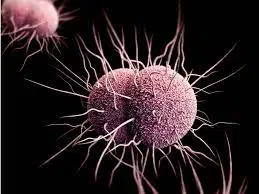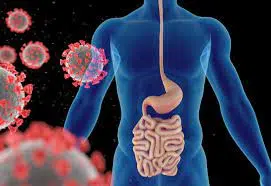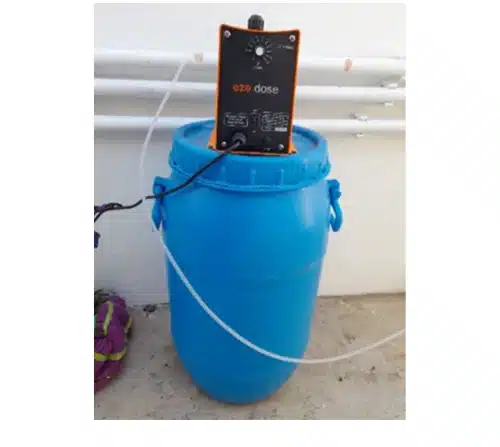Bad Smell/ Odor Removal Treatment
Using Ozonator / Chlorine Dosing System
Bacterial contamination in water is a significant concern, leading to various health issues and the spread of waterborne diseases. This form of water pollution poses serious risks to human health and the environment. Common signs of contamination include bad smell water, smell water, bad smell from water, and bad smell in borewell water frequently. Let’s examine the challenges related to water supply, water quality, diseases caused by contaminated water, and the effects of bacterial infections.


Problems with water supply can result from inadequate infrastructure, water scarcity, and contamination. Factors such as aging pipelines, limited storage capacity, and inefficient water management contribute to unreliable water availability. Contamination often occurs due to industrial waste, agricultural runoff, sewage leaks, and improper waste disposal. Common signs of contamination include chemical smell in water, well water smells bad, well water smells like sewage, water smells like sewage, and borewell water smells bad frequently.
When water becomes contaminated with bacteria, it can spread waterborne diseases, affecting various areas and causing issues such as:
Bacterial Infections in Skin



Bacterial Infections in Throat


Bacterial Infections in Eye


Bacterial Infections in Stomach


Bacterial infections
Bacterial infections can affect various parts of the body, causing specific symptoms. Eye infections may result in redness, itching, discharge, and blurred vision. Nail infections can cause pain, swelling, and changes in nail appearance. Throat infections often lead to a sore throat, difficulty swallowing, and swollen lymph nodes. Stomach infections can trigger gastrointestinal problems such as diarrhea, vomiting, and abdominal pain. These issues can be linked to contaminated water sources, often indicated by bad smell water, smell water, bad smell from water, and bad smell in borewell water frequently.
Waterborne diseases
Waterborne diseases are a major health concern linked to bacterial contamination, often indicated by bad smell water, smell water, bad smell from water, bad smell in borewell water, chemical smell in water, and well water smells bad frequently. Four common waterborne diseases include cholera, typhoid fever, dysentery, and giardiasis. Cholera, caused by Vibrio cholerae, leads to severe diarrhea and dehydration. Typhoid fever, caused by Salmonella typhi, results in high fever, headache, and digestive issues. Dysentery, triggered by bacteria such as Shigella and Campylobacter, causes bloody diarrhea and abdominal pain. Giardiasis, caused by the parasite Giardia lamblia, leads to diarrhea, nausea, and stomach cramps.


Water pollution, including diseases caused by contaminated water, arises from various factors. Bad smell water, smell water, bad smell from water, bad smell in borewell water, chemical smell in water, well water smells bad, well water smells like sewage, and water smells like sewage are common signs of contamination. Industrial discharge, agricultural runoff, sewage leakage, and improper waste disposal are major contributors. Industrial activities release pollutants such as chemicals, heavy metals, and toxins into water bodies. Agricultural runoff carries pesticides, fertilizers, and animal waste, contaminating water sources. Sewage leaks introduce harmful bacteria and pathogens into water systems. Improper waste disposal, including dumping waste into water bodies, further exacerbates water pollution.
Water pollution has numerous negative effects. It damages aquatic ecosystems, causing fish and other aquatic life to die due to oxygen depletion and toxin buildup. It can also trigger algal blooms, disrupting the natural balance and producing harmful toxins. Water pollution poses significant health risks, as consuming or coming into contact with contaminated water can cause bacterial infections, waterborne diseases, and other health problems.
To combat bacterial contamination in water, improving water infrastructure, implementing effective water treatment processes, promoting public education on waste management, and encouraging water conservation are essential steps. Regular monitoring and testing of water sources, along with prompt action when contamination is detected, are crucial. Sustainable management of greywater can also help reduce pressure on freshwater resources.
In conclusion, bacterial contamination in water poses serious risks to human health and the environment. It contributes to the spread of waterborne diseases and can affect various parts of the body, including the eyes, throat, stomach, and skin. Understanding the sources and impacts of water pollution is essential for implementing measures to ensure clean and safe water for all.
Indicators such as BOD (Biochemical Oxygen Demand), COD (Chemical Oxygen Demand), coliforms, and E. coli are commonly used in water quality assessment and monitoring. While not directly linked to bacterial infections, these indicators help evaluate water pollution levels and assess potential health risks from bacterial contamination. Let’s explore each of these indicators in the context of water quality.
- BOD (Biochemical Oxygen Demand): BOD (Biochemical Oxygen Demand) measures the amount of oxygen consumed by microorganisms as they break down organic matter in water. It is an important parameter for assessing the level of organic pollution in water bodies. Elevated BOD levels indicate the presence of organic materials, such as sewage or agricultural runoff, which can lead to oxygen depletion in aquatic ecosystems. Bad smell water, smell water, bad smell from water, bad smell in borewell water, and chemical smell in water are often signs of organic pollution. While BOD is not directly linked to bacterial infections, it helps evaluate the overall health and quality of water sources, including the potential for harmful bacteria to be present.
- COD (Chemical Oxygen Demand): COD (Chemical Oxygen Demand) measures the amount of oxygen required to chemically oxidize both organic and inorganic substances in water. It provides an estimate of the total quantity of pollutants present, including organic compounds, chemicals, and heavy metals. Well water smells bad, well water smells like sewage, water smells like sewage, and borewell water smells bad frequently are often indicators of high COD levels, suggesting the presence of various pollutants that can negatively impact water quality and aquatic life. While COD is not specific to bacterial infections, it helps assess the overall pollution load in water sources and the potential for contamination by bacteria or other harmful substances.
- Coliforms: Coliforms are a group of bacteria naturally found in the intestines of warm-blooded animals, including humans. They are commonly used as indicators of fecal contamination in water, as their presence suggests the potential for harmful pathogenic bacteria. Bad smell water, smell water, bad smell from water, bad smell in borewell water, and chemical smell in water frequently indicate contamination, which can be associated with coliform presence. Although coliforms themselves may not cause infections, their presence signals a possible risk of waterborne diseases. Testing for coliforms helps detect potential fecal contamination, prompting further investigation to ensure water safety and prevent bacterial infections, particularly of the skin.
- E. coli (Escherichia coli): E. coli is a specific type of coliform bacteria and is a key indicator of fecal contamination in water. It is typically found in the intestines of warm-blooded animals, including humans. The presence of E. coli in water suggests possible contamination by sewage or fecal matter, which may contain harmful pathogenic bacteria. Well water smells bad, well water smells like sewage, water smells like sewage, and borewell water smells bad frequently are often signs of such contamination. While E. coli can cause severe gastrointestinal infections if ingested, testing for its presence helps identify potential health risks and highlights the need for further water treatment and disinfection.
In summary, BOD and COD are indicators used to assess water pollution and the overall health of water bodies. Coliforms, including E. coli, are bacterial indicators that help identify the potential presence of fecal contamination and the associated risks of waterborne diseases. While these indicators are not directly linked to bacterial infections in skin, bacterial infections in throat, bacterial infections in eyes, and bacterial infections in stomach, understanding water quality parameters is essential for safeguarding public health and ensuring the safety of water sources.


